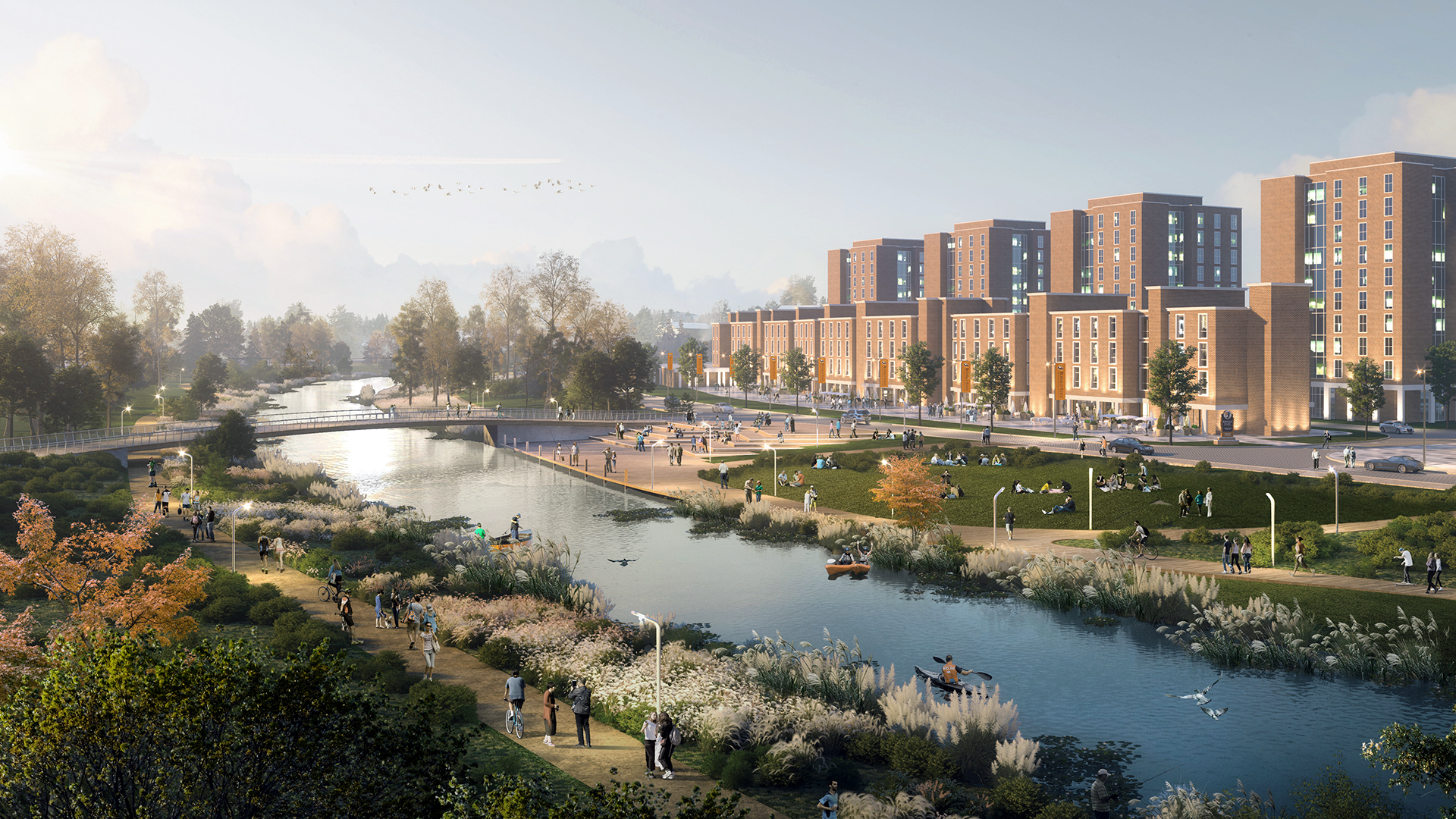Several plans for the Scajaquada expressway have been proposed in the past, one of which was offered by the New York State Department of Transportation. This suggestion was quickly met by a counterplan from the Buffalo Olmsted Park Conservancy, in partnership with several local cultural institutions.
The ideal goal is to allow for greater visitor accessibility, ideally by creating an at-level intersection of the 198 at Delaware Avenue, and restoring a historic bridge. Doing so would not only support local institutions via easier biker and pedestrian access, but also inherently impact the health of the Scajaquada Creek long term.
"Every decision made about the roadway and these institutions will impact the health of the creek moving forward," - Jill Jedlicka, executive director of Buffalo Niagara Riverkeeper.
The New York State Department of Transportation has a plan for the conversion of Route 198 from an expressway to a slower-moving roadway. The Buffalo Olmsted Parks Conservancy, in partnership with several local cultural institutions, believes it has a better plan and introduced it on Monday.
The proposal unveiled at Delaware Park during a news conference would alter the course of the 198 at Delaware Avenue. Auto traffic, which now travels on a stone arch bridge over Delaware, would instead come to an at-level intersection. The bridge, meanwhile, would be converted for use by pedestrians and bicyclists.
"Our vision creates an accessible path that will enable visitors to move seamlessly through our cultural treasures," said Dennis Horrigan who chairs the board of directors of the Buffalo Olmsted Parks Conservancy.
Many of the assets he mentioned, including the Darwin Martin House, Buffalo Zoo, Albright-Knox Art Gallery, Burchfield Penney Art Center, Shakespeare in the Park, and Buffalo History Museum, are divided by the current roadway. Supporters of the Conservancy's alternate plan believe all the local institutions will gain if pedestrians and bikers have easier access.
"We think we can go from two intersections to one," said Stephanie Crockatt, executive director of the Buffalo Olmsted Parks Conservancy. "We think we could restore a historic bridge to bike and pedestrian access, which would then afford the entire corridor to be looked at in real time for a comprehensive plan that could be multi-modal and serving the entire cultural corridor."
Additional organizations supporting the Conservancy's plan for the Scajaquada include Preservation Buffalo Niagara, the Buffalo Museum of Science, Delaware Soccer, the Restore Our Community Coalition and Buffalo Niagara Riverkeeper.
Jill Jedlicka, executive director of Buffalo Niagara Riverkeeper, spoke of the need to protect Scajaquada Creek as part of a road redesign. Supporters of the plan introduced Monday said it promotes appropriate runoff and less negative environmental impact.
"Every decision made about the roadway and these institutions will impact the health of the creek moving forward," Jedlicka said. "We've seen some signs of some great progress and potential for improvements of the storm water runoff. But for us to truly restore the grandeur of the creek and the creek system, for the benefit of this community and the institutions, we need to take a hard look at some of the areas farther downstream."
Crockatt suggested that, based on her institution's research, the cost of their plan is similar to that of the DOT's strategy. The challenge is getting the DOT to listen. "We continue to send them communication," Crockatt said. "We continue to reach out. They have not been responsive as of yet."



